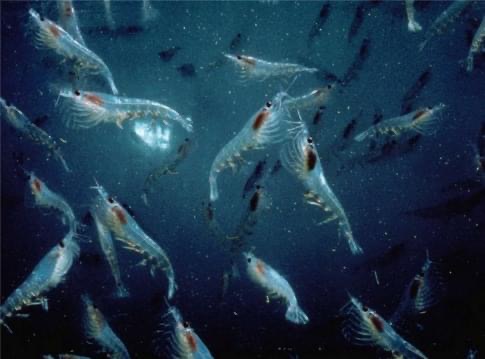How fisheries data can help sustain Antarctica's ecosystems
Antarctic krill is the vital part of the food chain, nurturing diverse life forms in the Southern Ocean surrounding Antarctica.
- It is also targeted by the fishing industry for its valuable Omega-3 fatty acids and use in aquaculture feeds.
- But data collected by the fishing industry on krill can help us protect the ecosystem this species supports.
Antarctic krill is a ‘keystone’ species in the Southern Ocean surrounding Antarctica, embodying a pivotal role in sustaining the region's delicate ecosystem. This free-swimming, protein-rich crustacean is a vital part of the food chain, nurturing diverse life forms including birds, fish, penguins and marine mammals. Beyond this, krill plays an important role in the biogeochemical cycle of the Southern Ocean.
This extraordinary creature's value extends beyond its ecological significance too. Rich in Omega-3 fatty acids sought for supplements and aquaculture feeds, krill is targeted by the fishing industry. Yet, this industry does not only provide krill products but also scientific insights into the ecosystem it relies upon, thanks to the data collected from the fishing vessels.
Fishing vessels are equipped with a device called an echosounder. This instrument determines the depth of the seabed and also shows the objects in the water column that have densities different from seawater, including animals, shipwrecks, submarines and gas flares.
By analysing the echosounder data, scientists see the krill swarms, their distribution patterns migration dynamics and even predators’ behaviour. Combining with other data that describe physical and chemical properties of seawater in the area, scientists study how climate change alters the ecosystem's health.
Data-based science initiatives and projects empower the regulation of fishing practices, paving the way for sustainable harvesting that ensures ample nourishment for the entire ecosystem, while fostering equitable growth for krill fishing enterprises and thereby contributing to national economies and global food production.
The krill fishery in the Southern Ocean is regulated by the Commission for the Conservation of Antarctic Marine Living Resources (CCAMLR), an international treaty organization established in 1982, which instructs the fishing industry on where and how much krill they can take. Krill harvesting is restricted to the area around the Antarctic Peninsula, called CCAMLR Area 48, where scientists found the highest densities of krill (48-63 million tonnes). Fishing quotas are based on historical catch limits divided into regional units (e.g. Area 48.1- 48.4). These quotas have been static since 2009 with the limit of the current total allowable catch set to 620,000 tonnes.
The catches remain well below the upper precautionary limit set for fishery, according to 10 years of data collected around the South Orkney Islands and published by the Institute of Marine Research of Norway. However, the basis for the quota does not include annual baseline information on mammal population, the health of the ecosystem, the effects of climate change and the influential biogeochemical role of Antarctic krill.
CCAMLR is currently revising its krill management to renew the regulations and hence, plans to increase krill data collection, monitoring and analysis through a new system called “feedback management”. Wirld Economic Forum





